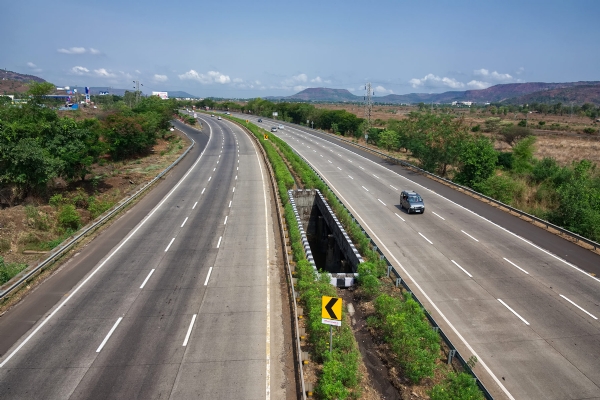Highway Construction in India gets a Boost
To give a boost to infrastructure, India is developing transport infrastructure like highways, in a rapid way
Total Views |
- KINJAL YOGESH DIXIT
To give a major boost to infrastructure, India is developing its transport infrastructure like roadways (highway), railways, commercial waterways, etc. in a rapid way.
In the early stages, India placed its focus mostly on infrastructure of railways. But for the past couple of decades, roads have replaced railways and are being given more priority. Taking into consideration the development of our country, transportation is one of the key aspects for bettering our economy.
Transportation essentially has the greatest multiplier effect on any economy. This is why it also has the power to completely transform the lives of the ordinary people.

Transport infrastructure like railways, roads, air / waterways are the backbone of any country’s economy. The economy of Germany was built on the base of a brilliant railway system and the autobahn. The US is made up of a crisscrossing network of freight trains, airports and interstate highways. The advanced economies like those of Japan, South Korea, Switzerland and the Netherlands are all known for their advanced infrastructure.
Recently, China has set a standard for implementing infrastructure at a scale and speed never seen before in history. India too, hopes that creating better infrastructure will better the economy, create more job opportunities and raise the standard of living for millions of citizens.
Highways Infrastructure:
According to a 2018 NITI Aayog report, 59% of all freight in the country is transported via road, 35% by railways, and 6% through waterways and less than 1% through airways.
In March 2020, India’s railway track length was 126, 366 kms and in March 2019, the length of national highways was 132, 500 kms.
Revived Focus:
Over the past 2 decades, India has shifted its focus to road infrastructure which began under National Democratic Alliance (NDA) govt led by Atal Bihari Vajpayee of BJP.
Even if this government lost the 2004 election, NDA’s vision set in motion transport infrastructure development. In 2014, the (BJP-led) NDA came back to power, accelerating the construction of highways all across India.
The Golden Quadrilateral began the highway construction – a massive project which connects India’s 4 biggest cities - Delhi, Mumbai, Chennai and Kolkata. This gave a huge boose to India’s economic growth. Since NDA regained power, India embarked on the Bharatmala Pariyojana - which is an ambitious project trying to connect the whole country through a network of highways. Even the remotest areas like those in the northeast, and Jammu and Kashmir are also to be a part of this.
The construction of highways in India has improved hugely ever since 2018. Before that, the standard of highways in India were not per those of the international standards. The measure of the length of these highways has improved vastly and is now in alignment with the international ones.
There has also been a gradual growth in the rates of the highway constructions. In the March of 2021, it reached a point of 37 kms / day. For the financial year of 2020-21, the road construction was at the average of 29.81 kms / day. While in 2014-15, this rate was 16.61 kms / day. Now, 6 years later, the road construction rate has almost become double and is currently the fastest India has seen since independence.
The entire credit of this goes to Nitin Gadkari, the minister of road transport. He claimed that India had secured the world record for the fastest road construction, in March. He says that his target is to achieve the pace of 100 kms / day in highway construction, as he not satisfied with the current performance. He says that the prime push of the government is to have time-bound, result-oriented, transparent and corruption free system.
Gadkari said asset monetisation is key to meet finances for road projects and the government is confident that NHAI will be able to raise Rs 1.40 lakh crore per year from existing highway projects.
Close to 53% of the Indian population is below 25 years of age, and a lot more people than once can imagine, are in need of employment. Employed people are more likely to school their children than those who are not. They are more likely to eat better and have a better life.
Till now, growth rate of India has not been able to exceed the job creation rate. In order to achieve social, political stability, the government needs to create more jobs.
Construction of infrastructure is easily one of the best ways to create more employment as it’s a massive multiplier effect in a developing economy like India’s.
What India needs are capable ministers, bureaucrats having domain expertise. The ministries managing power and finance in New Delhi and the state capitals should work towards matching this model.
Apart from building infrastructure, India must reform the laws it of colonial / socialist heritages, to boost economic activity. The government must take steps to reform education and vocational training hand-in-hand with the industry to raise the skills of the workforce, improve employability and increase productivity. If India is able to achieve this, then both domestic and foreign investment will stream in rapidly, without doubt. Then, India would finally be able to be one of the world’s fast-growing economies ever.